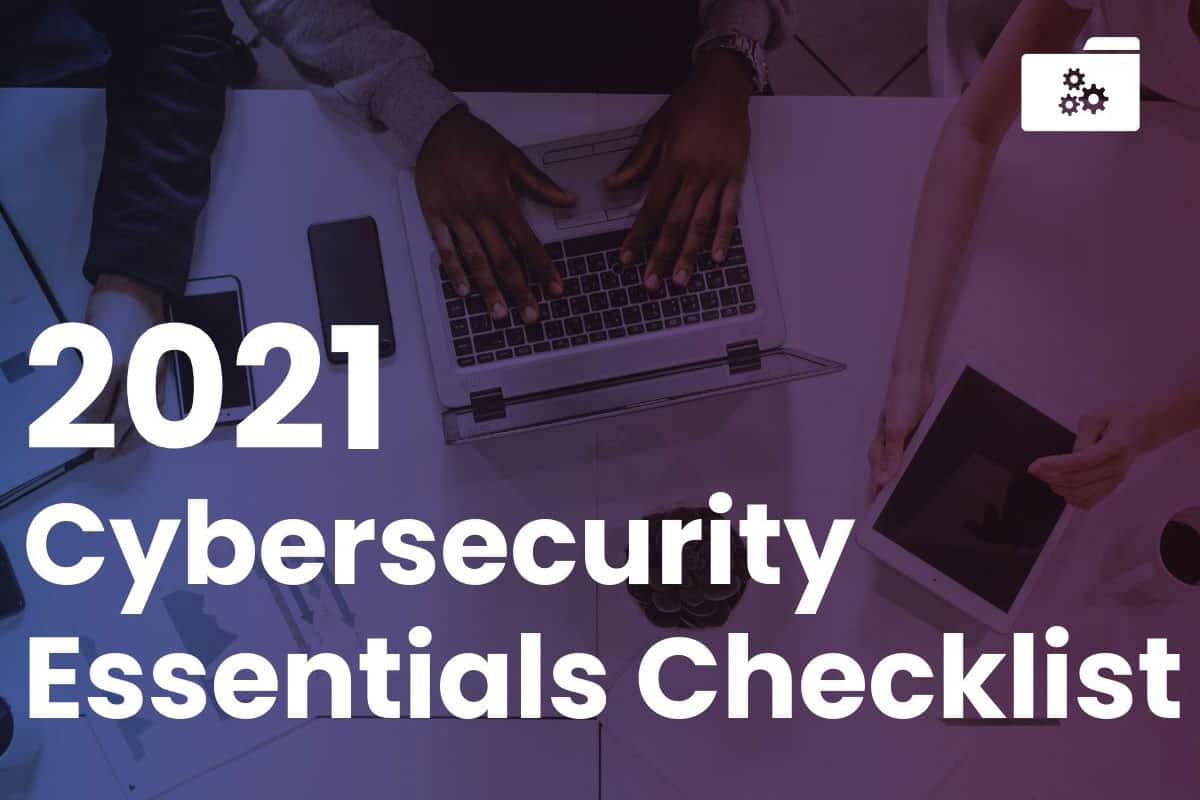The start of a new decade brings a sense of changing times and new beginnings. For your cyber security, it marks a good time to review how the state of cyber threats has changed since the time of Y2K or the 2013 Yahoo data breach. With the evolving threats and methods deployed in cyber crime, basic security standards have also progressed to keep your network safe. Do you know the basic security measures you should take to protect your business in 2021?
Download your copy of Anderson Technologies’ Cybersecurity Essentials Checklist for 2021!
Verify Everything!
We’ve talked before about the Zero Trust model for IT security. Even if you aren’t ready to bring your entire IT architecture up to Zero Trust standards, several of its security measures are now common-sense protections against modern cyber threats.
MFA
Multifactor Authentication (MFA) is quickly becoming the gold standard for preventing unauthorized access to your systems. In an age of Have I Been Pwned’s free credential checking and the all-too-often reuse of passwords, the question is no longer if your usernames and passwords have been stolen, but when and which ones.
MFA is the most basic way to prevent someone with stolen credentials from accessing your systems, and comes in various iterations, from an email or text code to authentication apps and security dongles like or RSA SecurID tokens. It’s a simple measure that ensures the bad actor needs more than a stolen credential to compromise your systems.
Access Controls: Minimum Necessary Use (Need to Know)
The days of free access within an organization are over. Clearly defining user roles and necessary access permissions is essential. There’s no reason for an intern to have the same access to your systems as the office manager or IT staff. Segmenting user access to the minimum necessary for their job performance means that if one employee is compromised, the bad actor won’t be able to reach every part of your business.
Stop Viruses and Malware in Their Tracks!
It’s common knowledge that anti-virus and anti-malware are required in this day and age, but remember that if your software firewall or anti-virus program catches an intrusion, the threat has already made it into your systems.
Know Your Hardware
Businesses need to understand the difference between a hardware firewall and a software firewall. You need to have the best protection against cyber threats, but many business owners don’t realize they are missing the necessary hardware firewall. Go to your IT closet and take a close look. Can you identify your modem, router, and hardware firewall? They are three different pieces of equipment, and if you aren’t sure which is which, talk to your IT staff or MSP to make sure all three are in place and properly configured for maximum protection and minimum interference.
Training and Filters
Firewalls and anti-virus programs won’t be of much use if an employee clicks a link in a phishing email and lets the bad actors in. Blacklisting certain websites and installing email filters like Proofpoint are great first steps for keeping malicious links and emails from getting through, but the biggest way to prevent phishing is training your employees how to recognize it. These tactics are too prevalent not to invest in comprehensive employee training.
Update! Update! Update!
Nothing invites bad actors into your systems like an unpatched computer, such as Windows 7 which stops receiving updates after January 14, 2020. Security updates are not just slight improvements; they often fix known bugs and zero-day threats that bad actors can use to infiltrate or bypass the implemented security safeguards. Without keeping up to date with your security updates, criminals can exploit unpatched vulnerabilities to breach your security and either install malware on or extract valuable and private information from your systems. So, when an update appears, make sure it gets installed right away and upgrade un-supported software as soon as possible.
Be Prepared for a Breach
The era of small businesses being too little to be profitable to hackers is long gone. Small, medium, and large business are all targets for cyber criminals and it’s essential to think not in terms of if you are breached, but when you are breached. How can you mitigate the risk or minimize the damage a breach could do to your business?
Backups
No business in 2021 should be without comprehensive and secure daily backups of their IT systems. Properly configured and tested backups are your insurance against ransomware and natural disasters. If you know you can restore all your data effectively and quickly from backups, there’s no need to pay a ransom for the hope you can get all your data back.
But don’t just grab the first out-of-the-box backup solution you find. Make sure your backup provider doesn’t keep only one iteration, meaning if your backup gets infected, you have no other options. Configure the solution correctly to back up all the information you need.
Encryption
If you are in a HIPAA-regulated industry, encryption is not optional. It’s the best way to prevent unauthorized breaches when mobile devices and laptops are lost or stolen. A properly encrypted laptop lost on a business trip isn’t a breach even if ePHI is on it, since the encryption prevents anyone who finds the machine from accessing the data.
Encryption is a good idea for any business that uses laptop and mobile devices for work purposes. The last thing you need is someone finding a lost phone or laptop and suddenly having access to sensitive business information or programs.
The Daily Routine
Sometimes it’s the little things that end up being the source of a cyber intrusion. These security measures may seem like common sense, but that doesn’t mean you shouldn’t have a clear policy for them. Failure to follow basic procedures everyday can open the door for cyber criminals.
Passwords and Password Managers
Reusing or only making minor alterations to passwords across applications is a major problem. Too many passwords are hard to keep straight, but people struggle even more to remember secure randomized passwords. This can lead to the worst-case scenario of employees writing down passwords that anyone could find. Having a long phrase or sentence the employee can remember is best practice, but if you have a lot of programs that require passwords, you don’t want employees using only one across the board.
Password managers like Myki or LastPass are a great solution to this problem. Employees can create the long, randomized alpha-numeric passwords, which are considered most secure, without the need to write them down or repeat the same password over and over. These services also provide apps for mobile phones so employees don’t need to be at the desk to access their passwords.
Screenlocks
Not every company institutes a screenlock timeout procedure for their business, but it’s a simple and effective security measure, especially if parts of your business are open to the public (HIPAA requires it). Even if you don’t have any public areas, screenlock policies can prevent insider threats from gaining access to an employee’s computer or information simply because they forgot to lock the computer before they left their desk. Make sure the screenlock requires a password and isn’t delayed to the point it’s useless to protect your information.
If you don’t have these basic policies and procedures in place, it may be time to re-evaluate the security measures you are using. Were they created for a different time and threat landscape? Can they continue to protect you against modern cybercrime? If not, it’s time to step up your basic security measures and stop criminals before they sneak into your business.
If you need help determining if your current security measures are adequate to protect your business, contact us today for a consultation!




